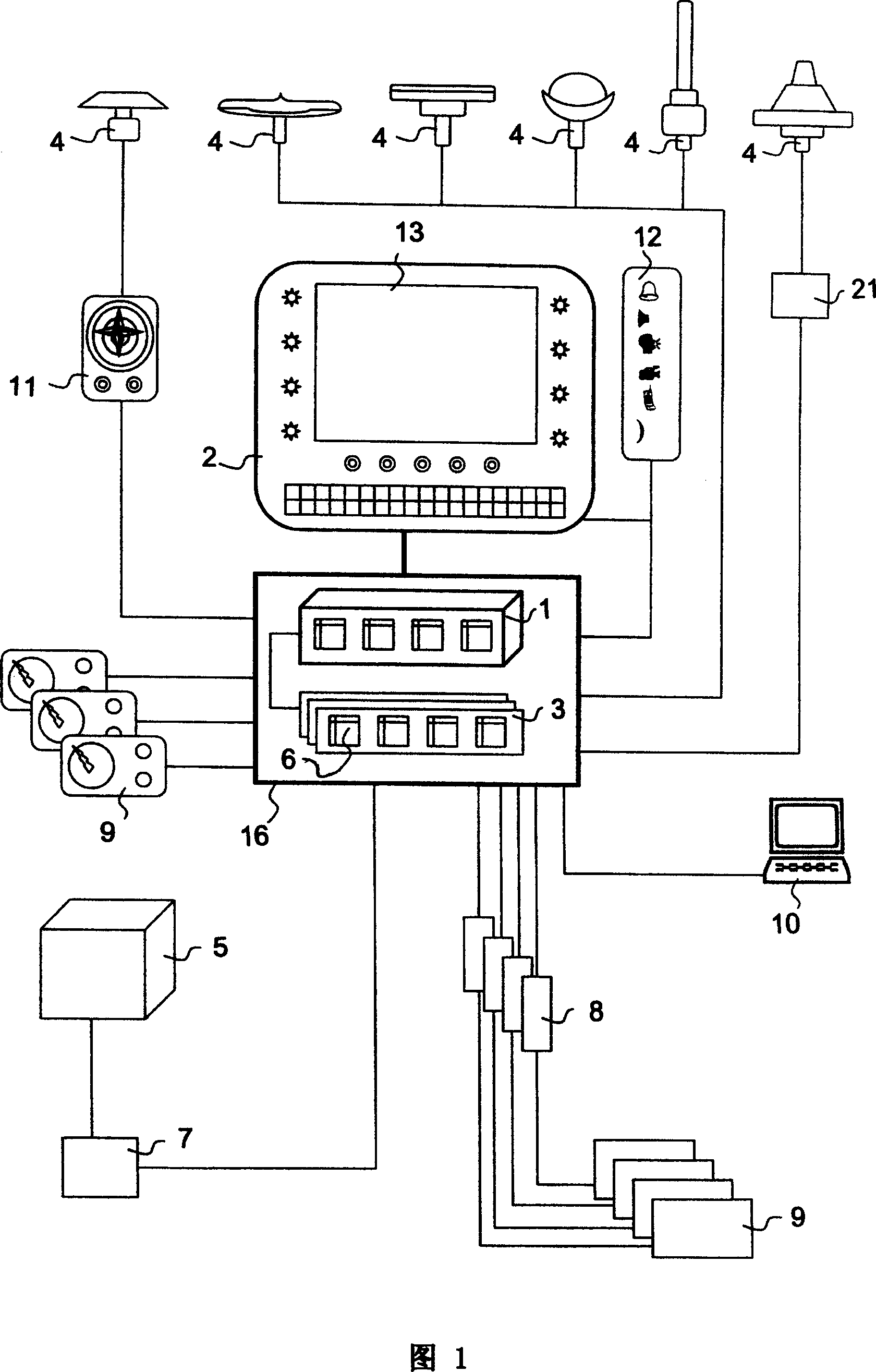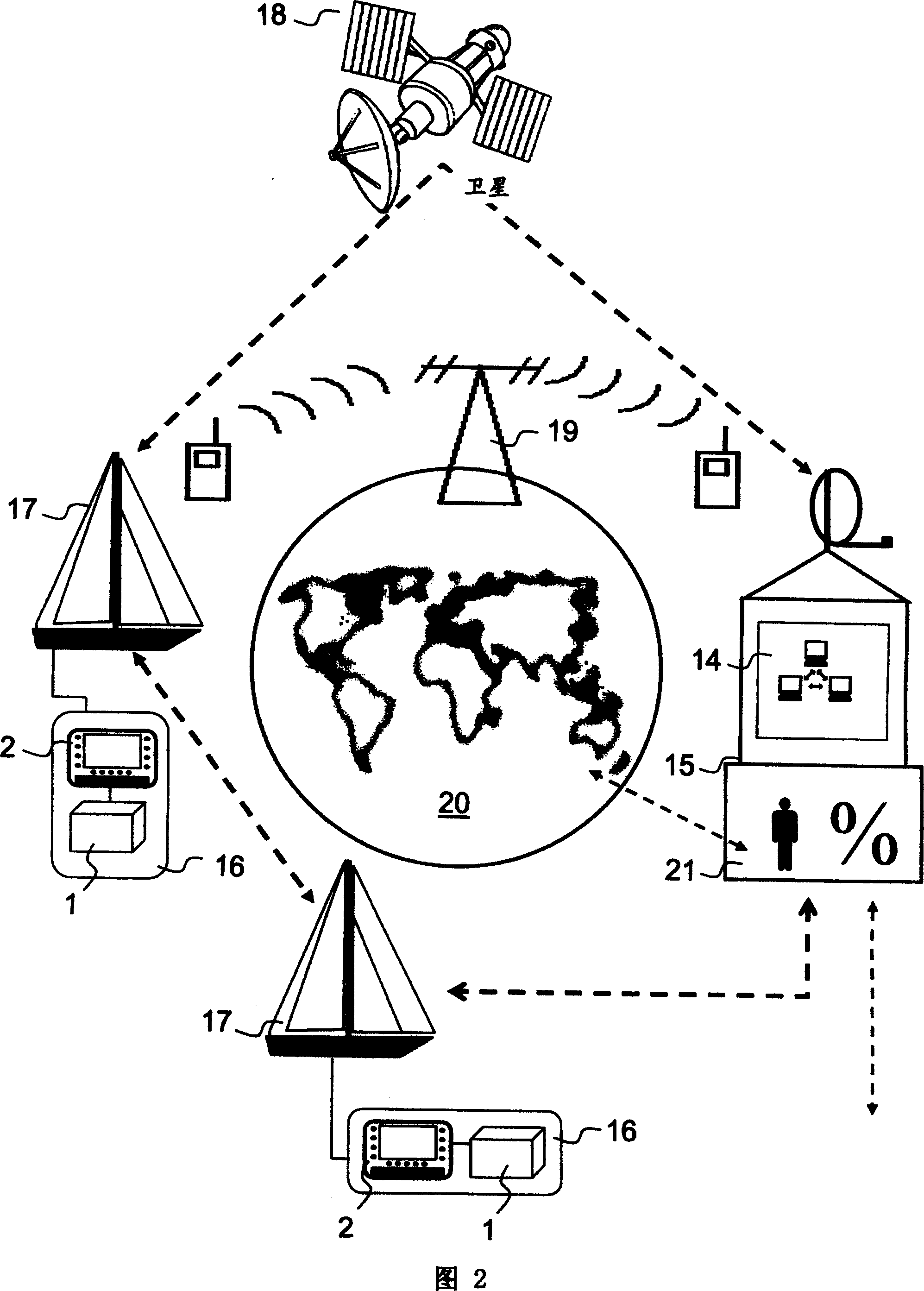Installation and method for total management of ships
A comprehensive, marine technology applied in the field of marine installations
- Summary
- Abstract
- Description
- Claims
- Application Information
AI Technical Summary
Problems solved by technology
Method used
Image
Examples
Embodiment Construction
[0012] Figure 1 schematically shows how the mobile communication platform 16 is installed on each equipped vessel. The exemplary embodiment consists of a central unit 1 with all necessary outputs and inputs (interfaces), wherein the possibility exists for the central unit 1 to be networked with expansion modules 3 as required. In this way, the extension module 3 can for example be built as intelligent interfaces to be connected to onboard systems, so that active marine components such as rudders and hydraulic components can be controlled with these intelligent interfaces. The second most important element of the communication platform 16 is the control panel 2 consisting of an LCD touch display 13 , a rotary head and input keys. The yacht captain mainly communicates through the control panel 2 which displays all information on the screen 13 . In addition, the control panel 2 is also used for communication, wherein the yacht captain can enter data via a touch screen and input ...
PUM
 Login to View More
Login to View More Abstract
Description
Claims
Application Information
 Login to View More
Login to View More - Generate Ideas
- Intellectual Property
- Life Sciences
- Materials
- Tech Scout
- Unparalleled Data Quality
- Higher Quality Content
- 60% Fewer Hallucinations
Browse by: Latest US Patents, China's latest patents, Technical Efficacy Thesaurus, Application Domain, Technology Topic, Popular Technical Reports.
© 2025 PatSnap. All rights reserved.Legal|Privacy policy|Modern Slavery Act Transparency Statement|Sitemap|About US| Contact US: help@patsnap.com


